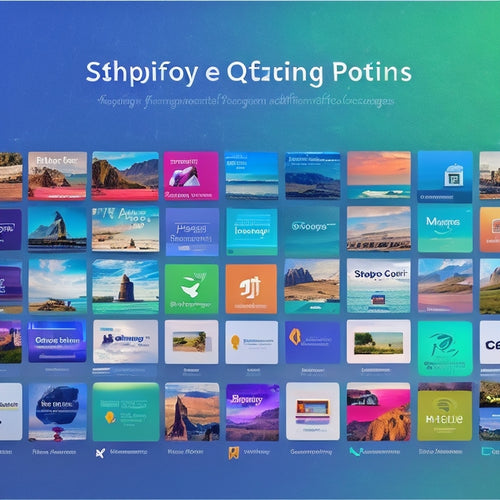
Grocery Shopper Segmentation: Understanding Buying Habits
Share
Grocery shopper segmentation is an essential strategy for retailers and manufacturers, as it enables them to identify and understand distinct consumer groups based on their buying habits, lifestyles, and needs. Effective segmentation helps companies pinpoint their target audience, including Convenience Seekers prioritizing ease and habitual loyalty, Family Feeders valuing good deals and well-known brands, and health-conscious shoppers. By understanding these segments, retailers can develop targeted marketing strategies that drive purchasing decisions. As consumer behaviors and preferences continue to evolve, gaining insights into these shopping habits is vital for retailers to stay ahead of the competition and adapt to emerging trends.
Key Takeaways
• Grocery shopper segmentation identifies distinct groups based on habits, values, and priorities to develop targeted marketing strategies.
• Convenience Seekers prioritize ease and habitual loyalty, while Family Feeders value good deals and well-known brands.
• Lifestyle and needs segmentation categorizes consumers into groups such as health-conscious, convenience-driven, busy professionals, and families prioritizing value.
• Purchasing decisions are influenced by personal values, lifestyle considerations, and external stimuli, with consumer preferences significantly impacting purchasing decisions.
• Understanding shopper characteristics and behaviors is crucial for retailers and manufacturers to develop effective marketing strategies and retain customer loyalty.
Understanding Grocery Shopper Profiles
Understanding the distinct characteristics and behaviors of grocery shopper profiles is essential for retailers and manufacturers seeking to tailor their marketing strategies and product offerings to meet the unique needs and preferences of their target audience.
By identifying and analyzing the shopping habits and consumer behavior of different segments, businesses can develop targeted approaches to capture their share of the market. Effective market segmentation allows companies to pinpoint their target audience and design strategies that resonate with them.
For instance, Convenience Seekers prioritize ease and habitual loyalty, while Family Feeders value good deals and well-known brands. By recognizing these differences, businesses can create tailored experiences that drive sales and customer loyalty.
Segmenting by Lifestyle and Needs
Market segmentation by lifestyle and needs enables retailers to categorize consumers based on their daily habits, values, and priorities, creating a nuanced understanding of their target audience. This approach allows retailers to identify distinct groups, each with unique preferences and behaviors.
For instance, some consumers prioritize health conscious choices, seeking natural and low-carb products, while others are driven by convenience driven preferences, valuing easily accessible retail outlets and clear product displays.
Additionally, retailers may identify:
- Busy professionals seeking on-the-go snacks and meals
- Families prioritizing value and familiar brands
- Adventurous eaters seeking new flavors and experiences
Driving Purchasing Decisions Factors
When making purchasing decisions, grocery shoppers are influenced by a complex array of factors, including personal values, lifestyle considerations, and external stimuli.
Market research reveals that consumer preferences play a significant role in driving purchasing decisions. For instance, Convenience Seekers prioritize ease and habit, while Family Feeders value good deals and familiar brands.
On-the-Go Consumers, on the other hand, seek convenience and variety, whereas Variety Seekers are drawn to new products and promotions. The Healthy and Natural Segment prioritizes health and sustainability.
Understanding these factors is essential for retailers and brands looking to tailor their marketing strategies to specific segments. By recognizing the nuances of each group, businesses can effectively target their messaging and promotions to resonate with their target audience.
Navigating Retailer and Brand Loyalty
Customer allegiance is a delicate balance, with grocery shoppers constantly weighing the benefits of loyalty against the allure of competing retailers and brands. Understanding what drives loyalty is pivotal for retailers and brands.
Loyalty programs, rooted in consumer psychology, can be an effective way to foster allegiance. However, they must be designed with the shopper's needs in mind, rather than simply as a means to collect data.
- Convenience factors, such as easy checkout and proximity to home, play a significant role in shaping loyalty.
- Brand trust, built through consistent quality and honest communication, is essential for long-term loyalty.
Emerging Trends in Grocery Shopping
As retailers and brands work hard to maintain loyalty, they must also adapt to shifting consumer behaviors and preferences, which are driving significant changes in the grocery shopping landscape.
One notable trend is the rise of sustainable practices, with consumers increasingly expecting eco-friendly packaging and reduced waste.
Technology integration is also becoming essential, with online shopping, mobile apps, and digital coupons gaining popularity.
Additionally, consumers are seeking personalized shopping experiences, with tailored recommendations and loyalty programs.
Community engagement is also on the rise, with shoppers looking for brands that support local causes and participate in social initiatives.
Frequently Asked Questions
How Do Demographic Factors Influence Grocery Shopper Segmentation?
Demographic factors greatly influence grocery shopper segmentation, as age demographics, income levels, geographic location, and family size shape consumer behaviors, with younger demographics prioritizing convenience, while families with young children focus on value and health-conscious options.
Can a Shopper Belong to Multiple Grocery Segmentation Profiles?
Imagine a shopper's identity as a Venn diagram, where overlapping preferences and shopping behavior create unique profiles. In reality, consumers often exhibit cross-sectional behavior, defying single-segment categorization. A cross-sectional analysis reveals that, yes, a shopper can belong to multiple profiles.
What Role Does Social Media Play in Grocery Shopping Decisions?
Social media greatly influences grocery shopping decisions, with 70% of shoppers considering influencer endorsements and 55% relying on online reviews, making digital platforms essential for brand awareness and customer trust.
How Do Cultural Differences Impact Grocery Shopping Habits Globally?
"As cultural nuances weave a rich tapestry, consumer behavior diverges globally, necessitating market research that uncovers local preferences, such as halal meat in Middle Eastern markets or rice varieties in Asian cultures, to inform targeted strategies."
Can Grocery Retailers Effectively Target Multiple Segments Simultaneously?
To effectively target multiple segments simultaneously, grocery retailers must employ tailored targeting strategies that acknowledge diverse consumer behavior, adapt to evolving market trends, and stay ahead of retail competition, all while maintaining a nuanced understanding of their target audience.
Related Posts
-
Shopify Speed Optimization Apps
This article provides an overview of Shopify Speed Optimization Apps. It focuses on their benefits, tips for optimiz...
-

Optimizing Shopify App Marketing: Strategies for Success
This article focuses on the optimization of Shopify app marketing strategies for achieving success. It provides insi...
-

How Do I Optimize My Website for SEO Shopify
This article examines strategies for optimizing websites on the Shopify platform for search engine optimization (SEO...

